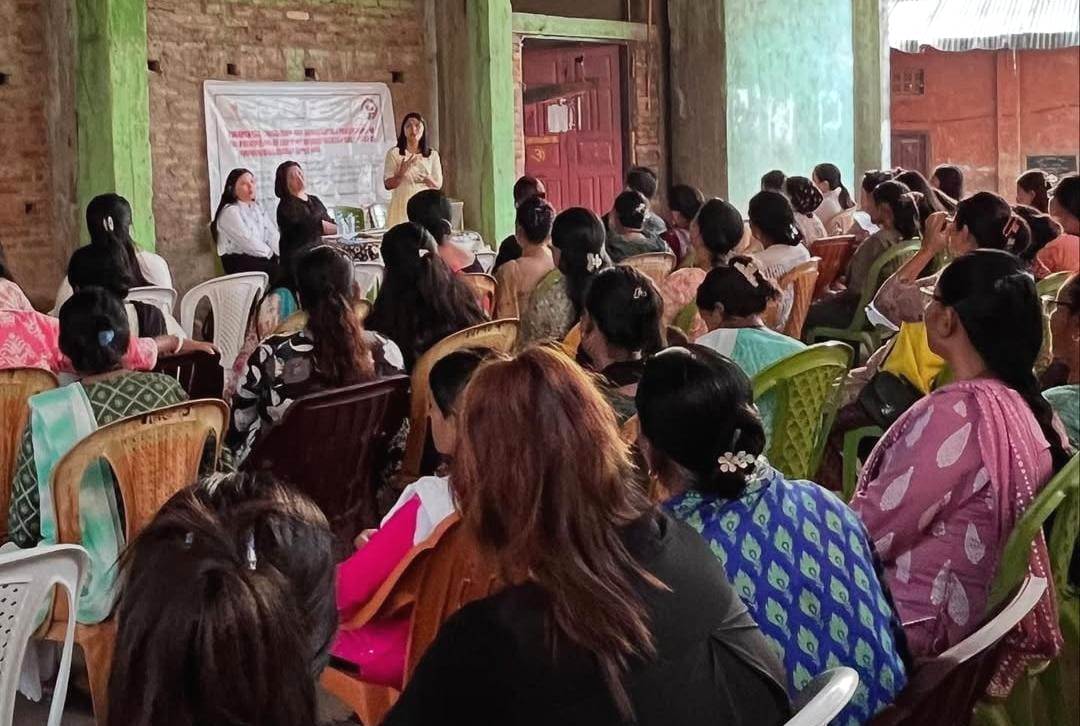SATURDAY, JUNE 21, 2025
- Home
- ‘Mission Shakti’ schemes facing barriers in Dimapur
‘Mission Shakti’ schemes facing barriers in Dimapur
A field survey on “Mission Shakti” programme conducted in parts of Dimapur highlights both encouraging strides and persistent gaps in awareness, access, and trust among women
Published on Jun 5, 2025
By EMN
Share
- Social Welfare officials say efforts underway to boost outreach and empowerment
- DIMAPUR — As the government pushes ahead with its nationwide “Mission Shakti” programme aimed at empowering women, a field survey conducted in parts of Dimapur—specifically Signal Angami, Kevijau, Supply Colony, and Nuton Bosti—highlights both encouraging strides and persistent gaps in awareness, access, and trust among women.
- Mission Shakti, implemented in Nagaland through the state’s Social Welfare Department, comprises two key components: Samarthya, which focuses on women’s empowerment, and Sambal, which ensures women’s safety and security.
- The Samarthya segment includes schemes such as the District Hub for Empowerment of Women (DHEW), Pradhan Mantri Matru Vandana Yojana (PMMVY) for pregnant and lactating women, Sakhi Niwas hostels for working women, crèches under the Balan scheme, and Shakti Sadam, a rehabilitation centre for women in distress. Sambal encompasses initiatives like Beti Bachao Beti Padhao, the 181 Women Helpline, and One Stop Centres (OSCs) for survivors of violence.

Participants at a recent awareness programme organised by the district administration and Sankalp-DHEW, Mission Shakti in Dimapur. (Representational Image)
- A street-level survey involving 60 women across the four areas yielded mixed responses. While 41 respondents said they were aware of at least one government-run scheme—most commonly the 181 helpline or OSCs—19 women admitted to having no knowledge of these schemes at all. Among those who were aware, 22 credited Anganwadi workers as their primary source of information. Others mentioned public billboards (10), social media such as WhatsApp (6), and traditional media like radio or television (3).
- However, awareness did not always translate into usage. Only 12 women reported ever trying to access any of the services, and of those, just five described their experience as positive—mostly involving the 181 helpline or OSCs. The remaining seven cited unclear procedures, delays, or discouragement from others as major barriers. In emergency situations, 38 women said they would prefer to approach informal community structures such as churches, local police, or Anganwadi workers. Notably, 22 women said they would not seek help at all, citing fear, shame, or a lack of awareness about their rights.
- The survey also revealed deeper systemic issues. A significant number of respondents—28—spoke of experiencing or witnessing domestic or emotional abuse.
- Fourteen cited alcohol abuse within their households. Ten women pointed to a lack of financial independence, while others highlighted issues such as girls dropping out of school (8) and public or workplace harassment (7). Many felt that these problems were exacerbated by inconsistent or poorly communicated messaging from government agencies.
- While 24 respondents confirmed that outreach programmes had reached their areas, 36—mostly from semi-rural pockets—reported little or no official engagement. Language barriers and a lack of follow-up were also mentioned as obstacles.
Also read: Aadhaar barrier for PwDs in Nagaland
- A major concern raised was the lack of safety and comfort in reporting incidents. Forty-six women expressed discomfort or fear about approaching police stations or helplines, citing reasons such as fear of blame, lack of privacy, long distances to facilities, and the absence of female personnel. Only 14 women said they felt secure enough to report incidents to the authorities.
- Despite these challenges, the survey did highlight some hopeful trends. Twenty-one women identified female role models in their neighbourhoods—teachers, pastors’ wives, or social workers—who were seen as sources of support. Still, 39 respondents felt that women were not given enough opportunities to lead in their local settings.
- When asked about what improvements they would like to see, many suggested regular awareness campaigns in local languages, especially in community spaces such as schools, churches, and marketplaces. Others recommended training women volunteers at the village level who could act as trusted contact points. Several called for an increased presence of female officers in police stations and health centres and proposed enhancements to helplines, such as callback options or text-based services for those with low literacy levels.
- Responding to these findings, officials from the Social Welfare department said that efforts are underway to expand outreach at the block and village levels.
- The officials said that educational materials are being distributed to raise awareness about schemes like PMMVY. So far this year, more than 30 awareness programmes have been conducted across Anganwadi centres, schools, and other community spaces, covering topics such as menstrual health, gender-based violence, and discrimination, reaching an estimated 2,000 people. Topics addressed during these sessions include menstrual health, gender-based violence, and discrimination.
- In addition to on-ground outreach, the department is reportedly leveraging social media platforms like Facebook and Instagram, along with local newspapers, to disseminate information about women’s rights and the support services available to them.
Imitakum
- (The writer is a Political Science student at the Gandhi Institute of Technology and Management, Hyderabad, and currently an intern at Eastern Mirror.)

